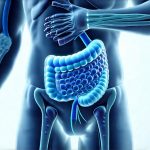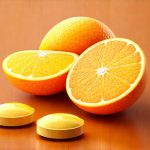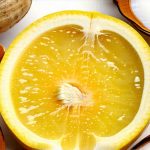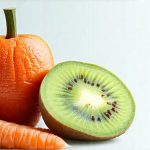Gut health is a cornerstone of overall wellbeing, but sometimes our digestive systems need a little extra support. Conditions like Inflammatory Bowel Disease (IBD), post-infectious IBS, or even severe stress can disrupt the delicate balance within the gut, leading to symptoms such as bloating, abdominal pain, diarrhea, and fatigue. During these periods of acute flare-ups or initial recovery, adopting a temporary low-fiber diet is often recommended by healthcare professionals – not as a long-term solution, but as a way to reduce intestinal irritation and allow the gut lining to heal. It’s crucial to understand that “low-fiber” doesn’t equate to nutrient-poor; in fact, it’s about strategically choosing foods that are gentle on the digestive system while still providing essential vitamins, minerals, and other vital nutrients.
The goal isn’t to eliminate fiber entirely, but rather to significantly reduce its intake temporarily – typically for a few weeks or months – focusing instead on easily digestible options. This approach minimizes workload for an already stressed gut, reducing fermentation and gas production which can exacerbate symptoms. It’s vitally important to work closely with a registered dietitian or healthcare provider to determine the appropriate level of fiber restriction and reintroduction strategy based on your specific condition and individual tolerance. This isn’t about deprivation; it’s about intelligent nourishment during a vulnerable time, paving the way for long-term gut health restoration.
Understanding Low-Fiber & Nutrient Density
A low-fiber diet typically restricts intake to under 10-15 grams of fiber per day – considerably less than the average person consumes. This means avoiding whole grains, raw fruits and vegetables (especially those with skin or seeds), legumes, nuts, and seeds. However, simply removing these foods can leave gaps in nutritional intake. That’s where nutrient density comes in. Nutrient-dense foods provide a high amount of vitamins, minerals, and antioxidants relative to their calorie content, ensuring you’re still fueling your body with what it needs despite the dietary restrictions. Prioritizing nutrient density is key to preventing deficiencies and supporting healing. It shifts the focus from what you can’t eat to what nourishing foods you can enjoy.
The challenge lies in finding palatable options that fit both criteria. Many traditionally “healthy” foods are high in fiber, requiring careful substitution and modification. For example, swapping a whole-wheat toast for white rice or well-cooked potatoes doesn’t necessarily mean compromising on nutrition if those alternatives are paired with lean protein and healthy fats. The focus is also on food preparation; cooking methods like steaming, boiling, or pureeing vegetables can make them easier to digest than raw counterparts.
Ultimately, a successful low-fiber, nutrient-dense approach requires planning, awareness of ingredient composition, and a willingness to experiment with new recipes and modifications. It’s about finding the sweet spot between digestive comfort and optimal nutrition – all while working in tandem with your healthcare team. Considering food rotation useful for gut recovery can also help identify sensitivities.
Sample Recipes for Gut Recovery
These recipes emphasize easily digestible proteins, well-cooked vegetables (avoiding cruciferous varieties during acute flares), and healthy fats. Portion sizes should be adjusted based on individual tolerance. Remember to introduce foods gradually as tolerated under the guidance of a professional.
Soothing Chicken & Rice Soup
This classic comfort food is inherently low in fiber and easily customizable.
- Ingredients: Boneless, skinless chicken breast (4oz), white rice (1/2 cup), chicken broth (6 cups – low sodium preferred), carrots (1 small, peeled and diced), celery (1 stalk, diced), ginger (1 tsp grated), turmeric (1/2 tsp), olive oil (1 tbsp).
- Instructions:
- Sauté diced carrots and celery in olive oil until softened.
- Add chicken broth, rice, chicken breast, ginger, and turmeric to the pot. Bring to a boil, then reduce heat and simmer for 20-25 minutes, or until chicken is cooked through and rice is tender.
- Shred chicken with two forks before serving.
- This soup provides easily digestible protein from the chicken, carbohydrates from the white rice (a more readily absorbed source than whole grains), and anti-inflammatory properties from ginger and turmeric. Hydration is crucial during gut recovery, making this broth-based soup an excellent choice. Consider incorporating how to use gentle broths for gut recovery into your diet.
Baked Salmon with Mashed Sweet Potato
A good source of omega-3 fatty acids and vitamin D, salmon is generally well-tolerated.
- Ingredients: Salmon fillet (4oz), sweet potato (1 medium), butter or olive oil (1 tbsp), salt, pepper.
- Instructions:
- Preheat oven to 375°F (190°C).
- Peel and boil the sweet potato until tender. Mash with butter or olive oil, salt, and pepper.
- Season salmon fillet with salt and pepper and bake for 12-15 minutes, or until cooked through.
- Serve salmon with mashed sweet potato.
- Sweet potatoes are often more easily digested than white potatoes due to their lower starch content, but portion control is still important. Salmon provides essential fatty acids needed for overall health and inflammation management.
Gentle Berry Smoothie (Modified)
While many fruits are high in fiber, certain berries can be tolerated in small amounts when blended smoothly.
- Ingredients: Banana (1/2 – ripe), blueberries or raspberries (1/4 cup – ensure seedless variety if possible), almond milk (1 cup – unsweetened), collagen peptides (1 scoop – optional for added protein).
- Instructions: Blend all ingredients until smooth.
- This smoothie provides a quick and easy source of vitamins, minerals, and antioxidants. The banana aids in digestion and the berries offer beneficial nutrients without excessive fiber content. Collagen peptides can support gut lining health but are not essential. Avoid adding seeds or skins to this smoothie during acute flare-ups. For recovery days, look into soft food recipes ideal for recovery days.
Considerations for Reintroduction
Once symptoms begin to subside, a gradual reintroduction of higher-fiber foods is often recommended, guided by your healthcare provider. This isn’t about immediately resuming your previous diet; it’s a slow and methodical process of identifying trigger foods and determining your individual tolerance levels.
- Start with small portions: Introduce one new food at a time in very small quantities to monitor for any adverse reactions.
- Keep a food diary: Record what you eat, how much, and any symptoms you experience. This helps identify potential triggers.
- Prioritize well-cooked foods: Even as you reintroduce fiber, continue to prioritize well-cooked options over raw alternatives.
- Listen to your body: If a food causes discomfort, eliminate it temporarily and try again later.
Managing Bloating & Gas
Bloating and gas are common symptoms during gut recovery, even on a low-fiber diet. Several strategies can help minimize these issues:
- Sip fluids frequently: Staying hydrated helps keep the digestive system moving smoothly.
- Eat smaller, more frequent meals: This reduces the burden on your digestive system.
- Avoid carbonated beverages and artificial sweeteners: These can contribute to gas production.
- Consider peppermint tea: Peppermint has been shown to relax intestinal muscles and reduce bloating (but avoid if you have GERD).
The Role of Probiotics & Prebiotics
While a low-fiber diet is focused on reducing irritation, it’s also important to support the gut microbiome.
- Probiotics: These are beneficial bacteria that can help restore balance in the gut. Discuss with your healthcare provider whether probiotic supplementation is appropriate for you – not all probiotics are created equal, and some may not be well-tolerated during acute flares.
- Prebiotics: These are food sources for beneficial bacteria, but many are high in fiber. Fermented foods like kefir (if tolerated) can provide a gentle source of prebiotics without excessive fiber. Focus on low-FODMAP prebiotic options as advised by your healthcare provider. Understanding the role of digestive rest days for gut recovery is also important.
Stress Management & Gut Health
Stress significantly impacts gut health. Chronic stress can disrupt the microbiome and exacerbate digestive symptoms.
- Practice relaxation techniques: Meditation, yoga, deep breathing exercises, or spending time in nature can all help reduce stress levels.
- Prioritize sleep: Aim for 7-8 hours of quality sleep per night.
- Seek support: Talking to a therapist or counselor can provide valuable coping mechanisms for managing stress. A holistic approach that addresses both diet and mental wellbeing is crucial for long-term gut health. For those experiencing nausea, explore step-by-step strategies for reducing stress-induced nausea and improving gut function.
Remember, this information is intended for general knowledge and informational purposes only, and does not constitute medical advice. It is essential to consult with a qualified healthcare professional for any health concerns or before making any decisions related to your health or treatment. Also, consider testing tools for rare but real gut syndromes if you are struggling with persistent symptoms. If you’ve recently overeaten, explore meal ideas for gut recovery after overeating.


















